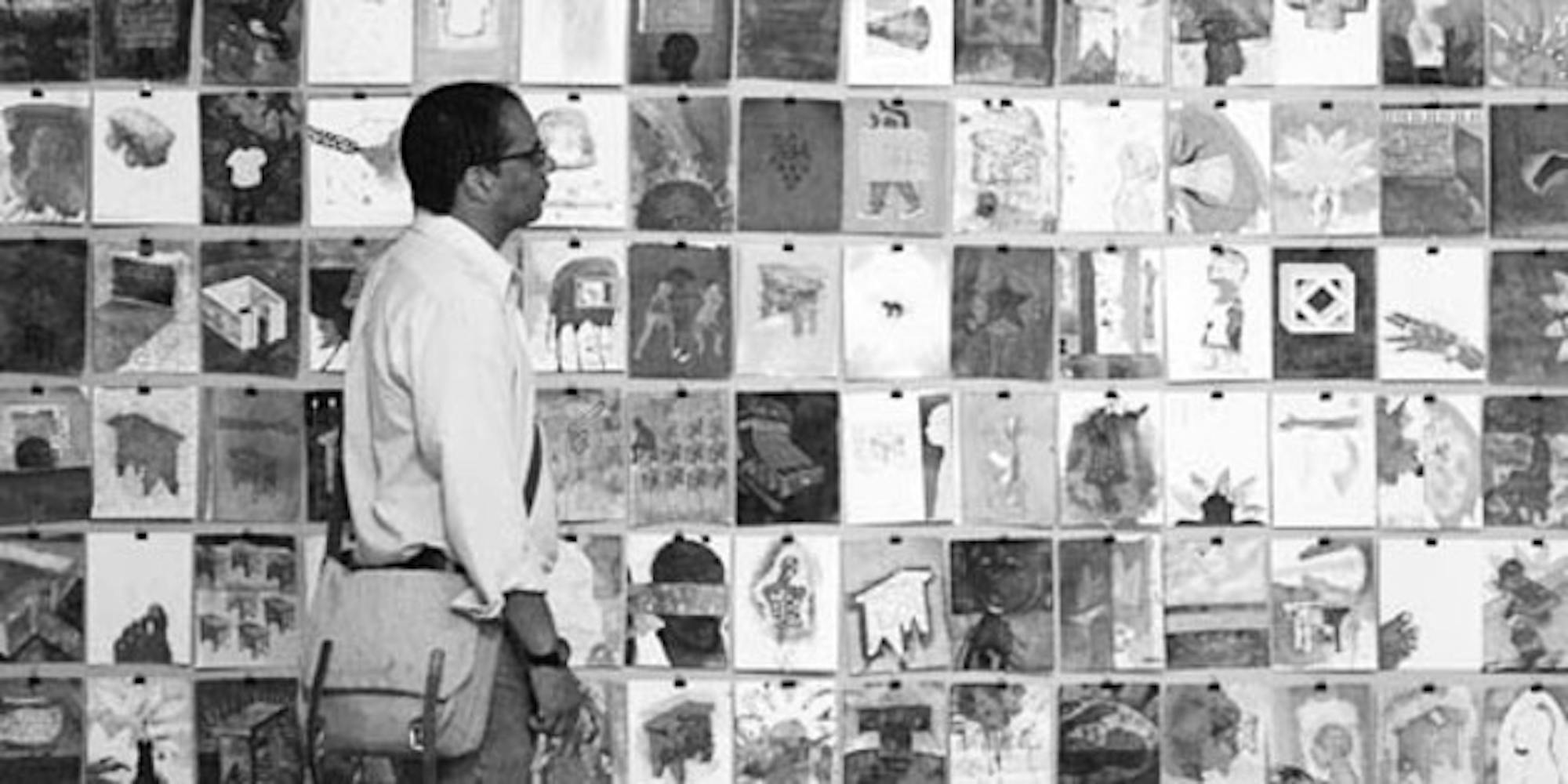Born in Port of Spain, Trinidad, and educated in the US, Cozier uses his art as a political and social tool in order to express his personal narrative and to comment on the mixed influences of "island identity." Cozier's work -- a collection of multimedia including drawings, paintings, sound/video recordings and construction installations -- frequently addresses issues of change, globalization and location.
The complexity of Cozier's intentions and subject matter fascinates the curious mind but challenges the viewer to find a basis for relating to the works. His art presents an inlet into the complexities of mixed-race identities in a changing world and requires genuine effort from the audience to grasp its meaning.
"Cross Currents" presents a dichotomy between the black businessman and the runaway slave. These two figures, the former titled "and to think he was such a polite boy" and the latter named "going north," are rubber stamps derived from 18th century advertising stock images.
The work represents Cozier's attempt to define an island, his homeland of Trinadad, where 50 percent of bank deposits are controlled by three percent of the population. Cozier was compelled to describe the story of Caribbean islands and their developing societies, which he has defined as a collection of dislocated people born into globalization. "Cross Currents" is meant as a historical critique and alludes to socio-political movement.
"All the businessmen are running in one direction and all the runaways are going in another," Cozier said, describing his intentions for the work during his introductory lecture last Tuesday. "It's kind of my own reflection on globalization -- who's spreading out and who's going to a central location. It's all about the movement of money, the movement of people. It's kind of a speculative work."
Much of Cozier's subject matter derives from his experiences when traveling between countries, which he continually records in personal notebooks. Only recently did Cozier open these notebooks to the public, and selected pages comprise "Tropical Night," exhibited on the far wall of the gallery.
Displayed with the pages of Cozier's narrative is an arrangement of painted images and words. Without a coherent path of meaning between the pages and images, however, the audience is left to speculate about their significance. During last Tuesday's lecture -- which preceded the opening of the gallery -- Cozier warned his audience of the ambiguity found within this exhibit.
"One would think that if I'm invited to speak to you, I would know what I'm doing -- well, actually, I don't," Cozier said. "And the purpose of showing these drawings is for me to kind of have conversations with people about these weird speculations that I'm going after. Every now and then a conceptual work shoots out of it as you will see here. [The images] do hint at certain things."
In the same lecture Cozier described other significant works during his career. "Attack of the Sandwichman," which cannot be viewed locally, includes 365 wrapped Wonderbread sandwiches with Trinidadian flags. Cozier likens this installation to both a cookie-cutter housing scheme and a North Korean military parade, but asserts that they are actually addressing the promise of "nation."
"The promises of nation are just like the 'promise' of Wonderbread -- it's supposed to have a very long shelf life, it's supposed to be very nutritional, it's very packageable, it's very neat and can easily be wrapped up."
A nationalist symbol, the flag, in conjunction with the word "attack," suggests an assault to those represented by the symbol -- the non-uniform, culturally mixed population of Trinadad. The small country encompasses a hybrid of influences from Spanish to African to Indian and does not produce homogeneous bread, according to Cozier.
Cozier also expressed his ideas of "identity" and "place" during a panel discussion that he moderated last Monday called "Conversation from Here." Ideas examined included geographical and national spaces, notions of civilization and authenticity, issues of transnationalism, identity and biculturalism and politics of national movement -- both physical and cultural. Questions challenging otherness, difference and sameness were raised as well. Other panelists included Richard Fung, Jerry Philogene, Krista Thompson and Nicole Awai.
In "Tropical Nights" and "Cross Currents," Cozier presents a meditation on cultural identity. His attempt to expose and define this process appears in his exhibited installations now at the Hop.




